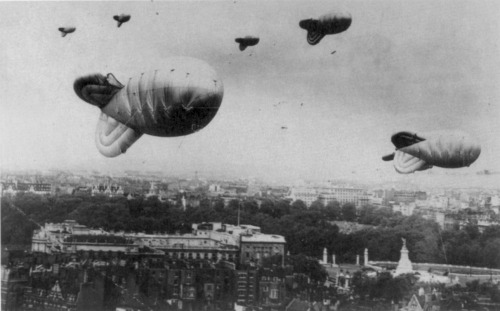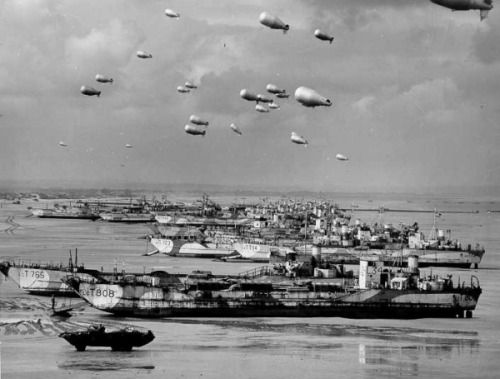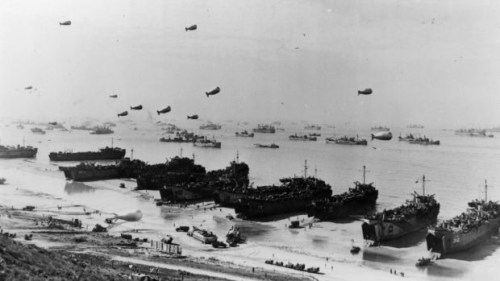The Barrage Balloon during World War IIThe use of barrage balloons began during World War I, but wer
The Barrage Balloon during World War IIThe use of barrage balloons began during World War I, but were most common during World War II. Barrage balloons were simple hydrogen or helium filled balloons which were erected over cities, fleets, and landing zones to protect against bomber attacks. They served little use against high altitude bombers, but were especially effective against low flying bombers, especially dive bombers. Providing an effective obstacle, the balloons either forced a pilot to release a bomb at a higher altitude, or run the gambit of flying through the balloon obstacles and running the risk of snagging on a balloon cable or crashing into a balloon itself. Sometimes, barrage balloons could be deployed holding a large net of cables, snagging any unfortunate dive bomber like a spiderweb.Typically barrage balloons were deployed at an altitude of 5,000 feet. Below that altitude, anti-aircraft guns often had a hard time traversing fast enough to keep up with an airplane. Thus the balloons forced bombers to fly at an altitude that was optimum for anti-aircraft gun targeting. During the London Bltiz, around 500 were deployed over London alone. They were also commonly used to protect naval convoys, especially Allied landing forces during the D-Day landings. -- source link
#history#wwii#bombers#aircraft#balloons#barrage balloons


